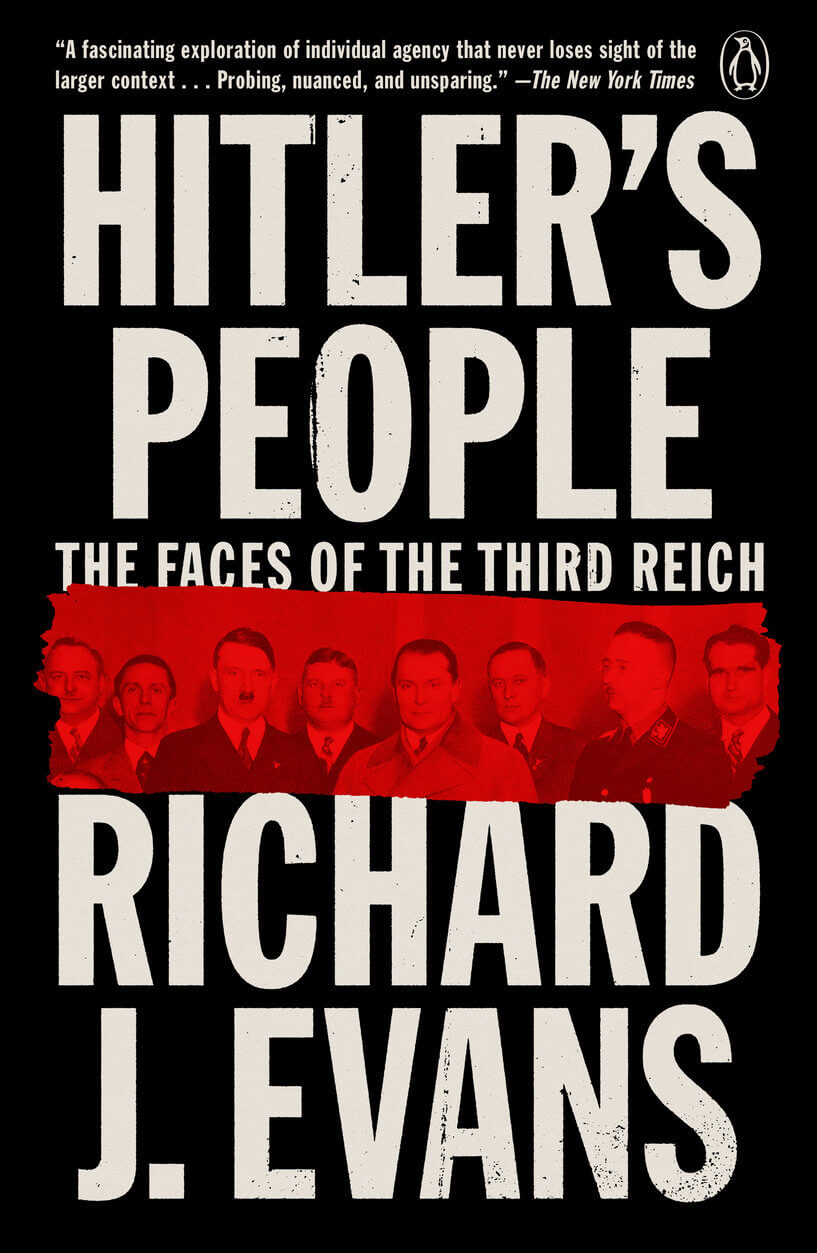
Richard J. Evans wrote Hitler's People: the Faces of the Third Reich, a book that focuses not only on 'personal characteristics and professional ambitions of' top nazis but also shows how those personality traits and goals shaped Germany and the world.
Here's an excerpt that shows Hitler's thin skin and deep–seated irrational rage.
So-called modern art, Hitler declared, was sick, incompetent, so primitive it could have been produced in the Stone Age by ‘cultural Neanderthals’, a view expressed in the notorious ‘degenerate art’ exhibition put on by Goebbels with Hitler’s approval in 1937. ‘From now on,’ Hitler declared, ‘we shall wage a relentless war of purgation against the last elements of the undermining of our culture.’ Modernist artworks were removed from galleries and museums, directors who had favoured abstract art, post-Impressionism, neue Sachlichkeit and other modern artistic movements were fired, and artists who produced them were blacklisted. This was Hitler’s revenge for his rejection as an artist before 1914, at a time when his painstakingly representational sketches were scorned and modernist painters like Picasso and Matisse were making their reputations. Art, he said, had to express the innermost essence of the German people – in practice, traditional representational art, painting and sculpture celebrating its heroism in past, present and future. ‘Modern’ art followed changing fashions; German art was eternal, because the German people was eternal.
In fact, none of the unimaginative, conventional and unoriginal works Hitler promoted has stood the test of time; what lasted were precisely the paintings and sculptures he ridiculed, by artists most of whom had fled into exile when he came to power. Hitler intervened in Germany’s artistic life actively, and he spoke on art far more often than any other dictator of the age. His views, mixed in with völkisch ideology, expressed more than anything else the petty-bourgeois prejudices of the ignorant and narrow-minded. Equally unoriginal in everything except their gigantomania were the pseudo-Classical public buildings he envisaged for the future of German towns and cities. Already in November 1937 he began planning the reconstruction of Berlin, converting it from the Prussian capital ‘to the eternal capital city of the first German people’s Reich’. Over the following years, working with his architect Albert Speer, he drew up plans for a new city – ‘Germania’ – intersected by four broad boulevards, an airport at each extreme, with the city centre marked by a vast hall of the people topped by a dome bigger than that of St Peter’s in Rome, a triumphal arch larger than the Arc de Triomphe in Paris, and similar overblown constructions. All this would demonstrate ‘that our task is to provide a millennial people with a thousand-year historical and cultural past, a city that will last for a thousand years and be appropriate for its never-ending future’. For Hitler, buildings represented power, a lesson he had learned from the imposing edifices of Vienna’s Ringstrasse before 1914. He repeatedly proclaimed that Germans were now living in a time of unsurpassed greatness, and looked forward to a bright future in which their lives would continue to improve. Every coming generation ‘will be ever stronger, ever mightier, and ever healthier, and give living generations an ever greater hope for the future’. At the same time, however, he told members of the Hitler Youth that they would have to acknowledge their devotion to ‘an eternal Reich and an eternal people’, sacrificing themselves if needed for the future of the German race.
Hitler even considered modernists to be suffering from a hereditary distortion of the sense of perception, and gave some consideration to sterilizing those who remained in Germany, though this never came to pass. One of his earliest legislative acts as Reich Chancellor was to pass the Law for the Prevention of Hereditarily Diseased Offspring, which came into effect on 1 January 1934. This laid down the groundwork for the following campaign of compulsory sterilization of the ‘unfit’, which included not only the very small number of Germans who suffered from serious hereditary conditions such as Huntingdon’s disease, but also the vastly greater number who were sterilized because they were social deviants, alcoholics, mentally handicapped or ‘morally feeble-minded’. On 7 September 1937 Hitler publicly justified the policy of ‘racial hygiene’ that would keep ‘German blood’ ‘pure and unpolluted’. Eventually some 400,000 Germans were compulsorily sterilized; from 1939 onwards, on Hitler’s express, signed orders, they began to be murdered, by gassing or lethal injection, or by starvation and medical neglect: men, women and children, numbering in the end around 200,000. Nazism, Hitler proclaimed in justification, was a scientific doctrine dedicated through the means of eugenic selection to the improvement of the German race.
By way of contrast, Hitler had relatively little to say about the economy. His speeches on the subject were short and lacking in detail. Among other things, he proclaimed that Germany would soon become self-sufficient, above all through the manufacture of artificial chemicals, fertilizers, fuel and rubber. Any shortages people might be experiencing were only temporary. Rather than go into detail about the economic situation, he preferred to congratulate himself for bringing strikes and disputes to an end and boosting construction schemes. Technical difficulties with problems such as international exchange rates he ‘solved’ simply by declaring them fixed for all time. He appointed the economics wizard Hjalmar Schacht, President of the Reichsbank and, from 1934, Minister of Economics, to engineer the economic recovery, though full employment was only achieved through the introduction of conscription in 1935 and the headlong rush to rearm, a policy that Schacht increasingly felt introduced serious distortions into the economy. As far as Hitler was concerned, the massive borrowings that had underpinned rearmament would be repaid by conquest and annexation. Determined to avoid the shortages that had, he believed, undermined morale in World War I, Hitler promoted a policy of ‘autarky’, making Germany as far as possible self-sufficient, replacing imported oil and rubber with synthetic products (which in the end proved a wholly unrealistic ambition), and promoting domestic agriculture.